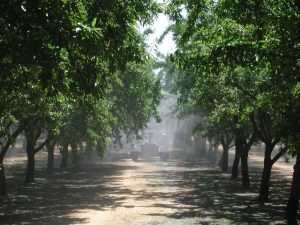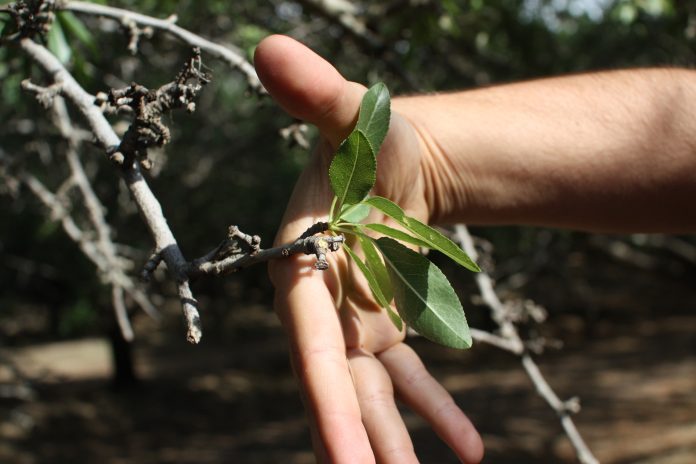As the season rolls along and we start seeing trends, it’s time to adjust. It drives me nuts (pun intended from a pistachio farmer) when I get called to a block to help a fellow farmer out with nutrition and get answers to questions such as, “Well, that’s the way we have always done it,” or, “I know these trees need more of this nutrient?” “My PCA tells me I need this at this time.” I say, “Show me.” Taking soil and tissue samples will guide your decision-making process, and if it doesn’t outright save you money per acre, it will guide your decision making in the right direction to address deficiencies or excessive rates.
Rains Bring Nutrients
I spoke of this in years past. In winters with turbulent and frequent storms, we tend to see very high nitrogen, phosphorus and potassium levels early in the season. We forget the atmosphere is 78% N. Storm mixing and solubilization brings a lot more N down with rainfall than we think. This year on most of my blocks, I have seen the same trends. The lower pH with volume tends to solubilize more P and K as well. This has limited my early N applications and saved quite a bit of money.
The only exceptions seem to be the farmers that just didn’t have the budgets last year on almonds or walnuts to supply a postharvest shot of nutrition. When this happens, we tend to get ourselves in to the death spiral of trying to cut costs, but subsequently also losing yields the next year when we need more crop to offset the price. It becomes a self-fulfilling prophecy that we will make less and less. I’m sure most of you have your almond tissues already and can see where you are lacking. Make sure you have them for pistachios and walnuts as well. Be sure you consider those nutrients that are excessive as well. Just because it’s high doesn’t mean we are all good. High N levels are typically out of balance with the other major nutrients. It will take more of the other nutrients to get back “IN” balance.
Soil and Foliar Nutrients
I recently ran into other consultants recommending nutrients typically applied this time of year. Without consulting an early tissue, how do you know if the trend continues? In foliar sprays, we tend to address the minor nutrients. However, the major nutrients, those absorbed in the highest quantities, N, Ca, K, S, Mg and P are often left out of foliars. Why? Shouldn’t those be the first focus? P is the main component of creating energy. Don’t let that get low. Ca is needed all year long, not just in spring after a heavy fall application of gypsum. Low magnesium early in the season makes it tough on trees to do their thing. Remember, Mg is the main element of chlorophyll. Our trees need that for creating carbohydrates. Before you address Zn, Cu, Fe or Mn, make sure your major nutrients are sufficient and in balance. At least be addressing them at the same time and not ignoring the big guys.
Keep in mind that you can hit your trees from two angles as well to keep things apart that don’t play well together. Put Ca in the ground while you apply P to a foliar spray. Spray Mg upstairs while you apply K to the roots. And for God’s sake (!?) make sure your pH is correct in the spray. I hate seeing foliars go out with pH above 7 and allow tie-up on top of the leaf before it even has a chance to get in. Make sure your tank is right. I love 6 for better absorption. On a side note, read your labels. Many herbicides like to be applied at a 3.5 pH. They tend to be much more effective there than the standard level a buffer gives you, or that shot of ammonium nitrate in the mix. Make those dollars go farther and be more effective. When time is of the essence, nutrients can be flown on often cheaper than the cost of running a rig through the trees. Factor in labor and diesel and you will surprise yourself. Not to mention, more acres, more quickly.

Farming is always evolving. Living through the wettest year on record and seeing the changes it brought to our crops and soils is exciting for a chemistry nerd like me. When your consultant comes to you with a recommendation, please ask why and make sure you are addressing all the angles in a systematic fashion. If they haven’t pulled tissues or soils and are just guessing, let them know you can’t afford to guess anymore. Be specific, be targeted and be proactive. In some instances, cutting a farmer’s N budget in half because the soils or rain gave it up this year is becoming the norm. It will also make it easier to balance all nutrients when one isn’t way out of whack. You may just find less is more, and your trees will thank you for it.











